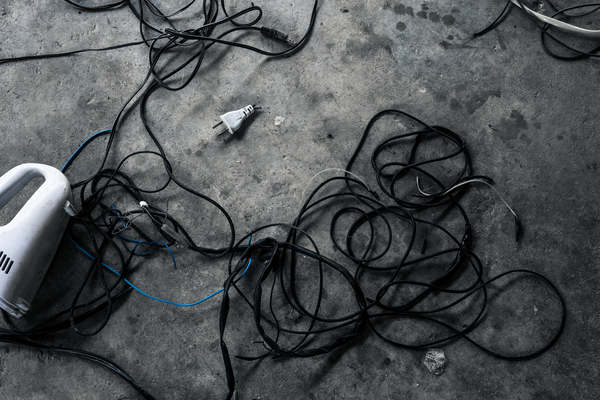Low voltages can cause electric shock, arcing

We often take for granted that exposure to low voltages, such as what we have in our homes, are a low risk for injury or harm. This is far from the truth and a mistake that could result in major injury or even death. Recently, there was young woman taking a bath who died when she touched her cellphone that was being charged at the time. This is an unfortunate accident that should remind us to be vigilant of the hazards associated with low level electricity.
Potential low voltage hazards are present in every home and workplace. These low voltages can result in primary hazards such as electric shock from direct contact or from close approach resulting in arcing and from secondary hazards such as falls or fires.
Electric shock occurs when the body becomes a pathway for the electric current to flow when we have direct contact with energized equipment. The possible results are tissue burns at the entry and exit points of the current, damage to muscles, damage to other organs and disruption of the normal heart function. The factors that will affect how severe the injury are the type of voltage (AC or DC), the amount of current, the duration of the current flow, the path taken through the body and internal body resistance (including PPE).
It is the current that can kill us. The following is brief example of the health effects caused by various AC current exposures:
•1 milliamp = the threshold of sensation
•5 milliamps = ground fault circuit interrupter trips
•10 milliamps = painful shock and muscle contractions
•20 milliamps = paralysis of respiratory muscles
•75 milliamps = breathing can cease
•100 milliamps = ventricular fibrillation occurs (heart loses ability to pump blood)
•>100 milliamps = death
All electrical contacts, except those from nuisance static discharge, should be reviewed by a physician and especially if the following apply:
•the skin is not intact at point of contact
•the skin is wet (from high humidity, sweat, etc.)
•prolonged duration of contact
•possibility that the current flow went through the heart
•if you have any implanted medical devices
•you have a chronic medical condition
•if the contact has caused a burn or other injury.
It is important that we recognize the low level electrical hazards at home and at work such as:
•overloaded circuits
•worn or cracked insulation on electrical cords
•extension cords used with heaters
•power tools used in a wet environment
•when using ladders outdoors (overhead power lines)
•power outlets without covers (children hazard)
•loose electrical outlet boxes.






